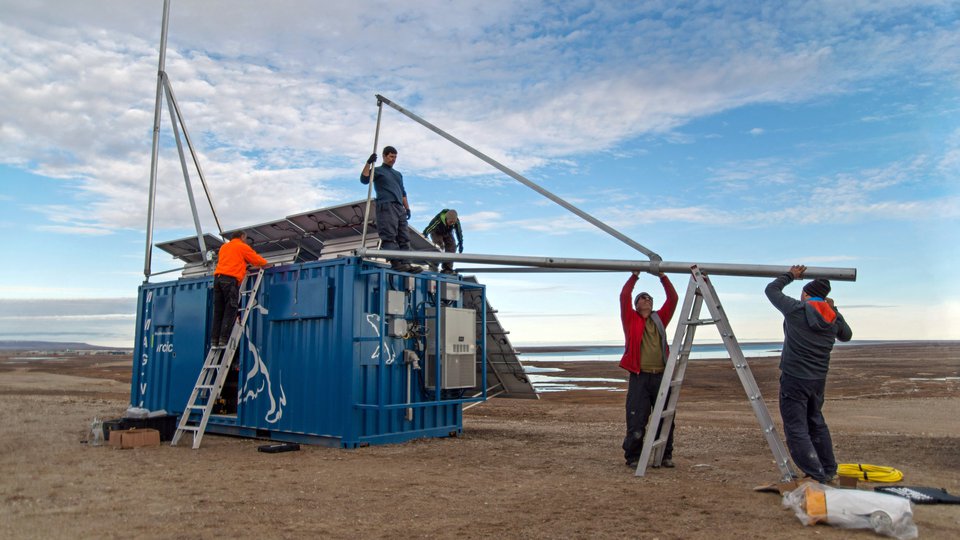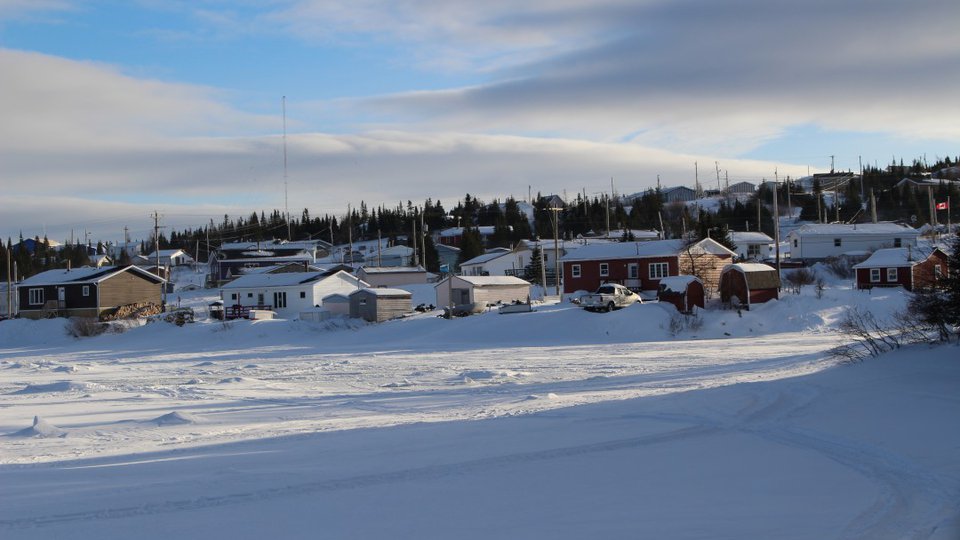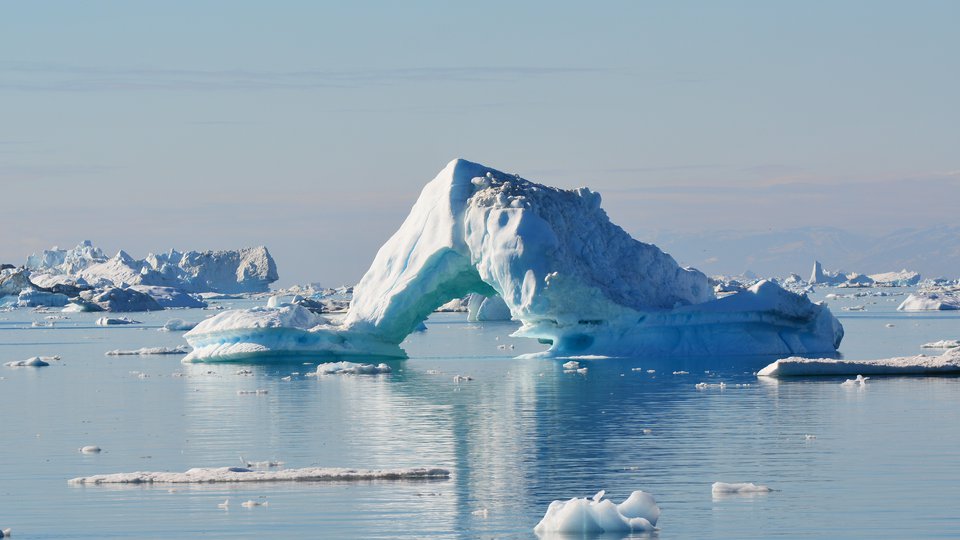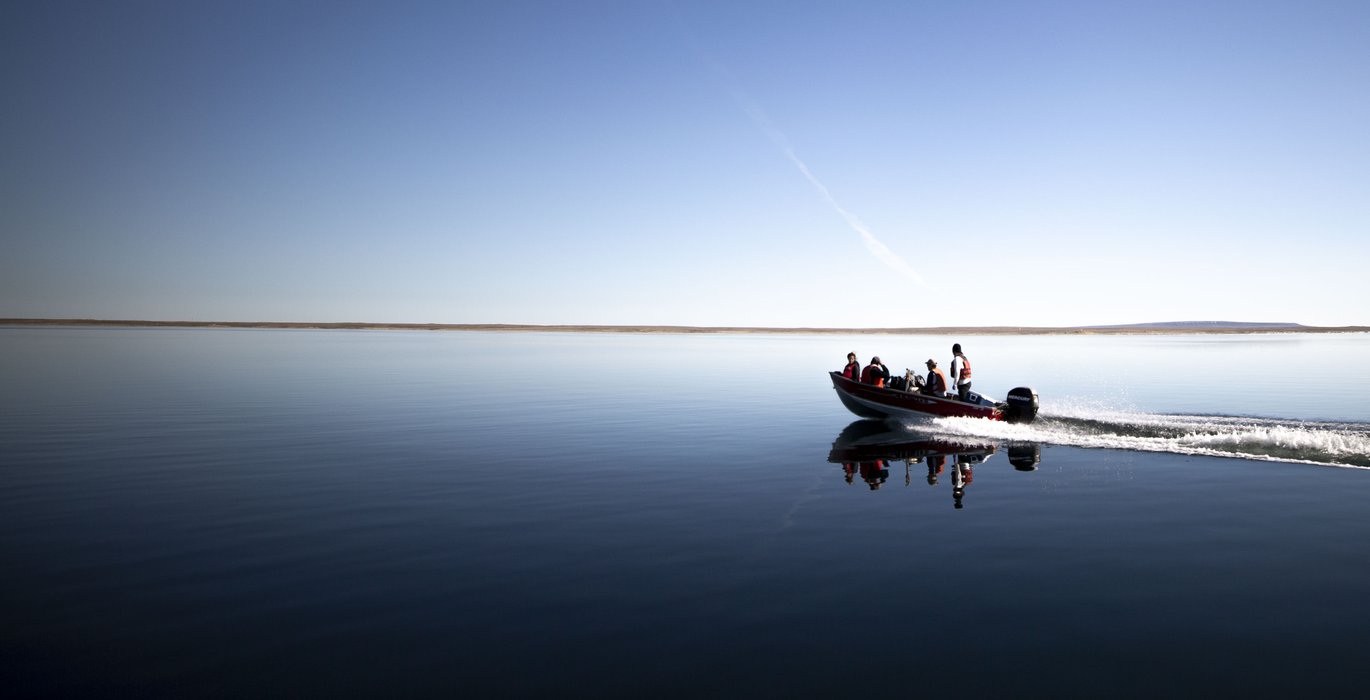
This essay was originally published by Northern Public Affairs, an independent, volunteer-run, not-for-profit organization dedicated to mobilizing diverse voices from across the North to analyze and comment on pressing public concerns.
rctic research continues to operate in a colonial framework and with an academic mindset that largely privileges the interests of southern institutions and fails to address Northern societal needs and issues, in particular those experienced in Inuit communities. Canada’s reconciliation efforts with Indigenous Peoples must extend to Northern research practices and its governance. We have seen research principles go from research on Inuit to research with Inuit, but it is high time we witnessed research by Inuit for Inuit. If research informs policy, and policy arguably leads to change, Inuit need to have a say in how research in Inuit Nunangat (Inuit homelands) is governed to better their lives. This piece filters such matters through the eyes of an Inuk, offering insights into current Arctic research governance, and maps out some of the solutions and opportunities for altering it in the interests of Inuit communities. I do so by drawing on my experience in academia in southern Canada.
Setting the context: The credibility gap and research governance
I joined academia out of the conviction that, by understanding the systems that control our lives as Inuit, I would be able to envision some of the solutions that might change such systems to better suit our realities. In my academic life, I have regularly taken the opportunity to research and write about topics that relate to Inuit, developing important tools to critique, analyze, and question systemic issues that Inuit face. This process has not been without tensions and struggles.
I reflect here on some of the tensions and struggles I have experienced when thinking about and conducting Arctic research, as an Inuk raised in Nunavut and as a scholar trained in Western traditions. These tensions are fundamentally rooted in having to deal with what I call the credibility gap between Western knowledge and Inuit knowledge. I understand this credibility gap as the view that Inuit (traditional) knowledge does not have (the same) credibility compared to Western academic knowledge. The former is assumed to be based on questionable oral tradition, myth, and story, while the latter is assumed to come from research that collects, questions, and analyzes evidence in a rigorous manner.
Current governance of Arctic research speaks to this credibility gap and extends into policy-making in the North. I take research governance to include how knowledge is perceived, how research is done (i.e. methodology and ethics), how results are circulated, and, most importantly, how research is funded, all being interrelated areas in research governance. We cannot separate these areas from one another, from policy-making, and from the wider social-cultural and political-economic context in the Arctic, since they further replicate colonial relations between Inuit and Canada.
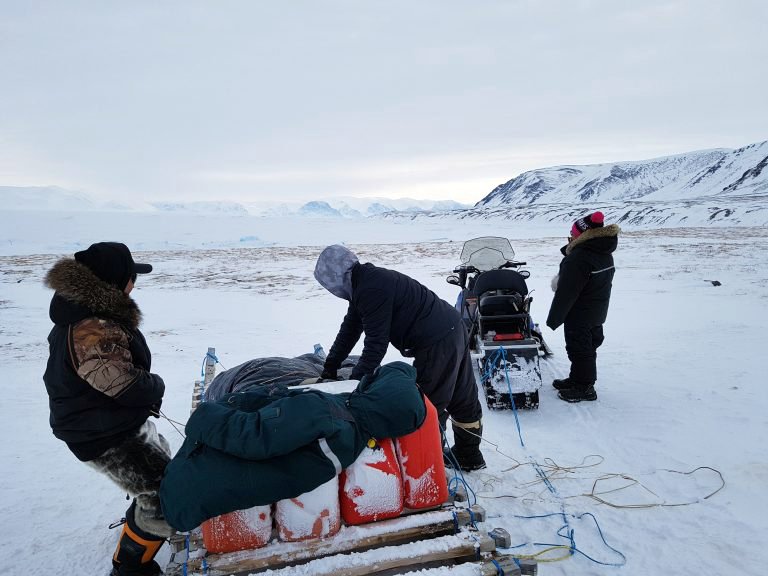
QIA training the first four participants in the community based monitoring project in Pond Inlet. Photo Credit: Qikiqtani Inuit Association
The question of knowledge and capacity-building: Policy and funding implications
Knowledge is a powerful agent in research. Research methodology should refer not only to the methods applied to carry out a research project, but also to the research assumptions that govern research. How we consider knowledge and what is worth relying on as scientific evidence are critical here. Within Arctic research that involves Inuit, positive changes in research methodology have resulted in shifts away from ethnographic description towards community-based research. Research principles have also transitioned from research on Inuit to research with Inuit. However, we have yet to see a turn to research by Inuit for Inuit. This is unlikely to happen as long as research assumptions about what counts as valid knowledge and scientific evidence remain unchanged ― the credibility gap will also remain in place, informing key issues like capacity-building.
For some, Inuit knowledge is traditional knowledge. I am not a fan of this term, as too often traditional is understood as something at the margins of our modern times. More importantly, in research it has been related to ensuring community cultural continuity, rather than providing valid scientific evidence. At best, it is seen as traditional ecological knowledge (TEK), with a role to supplement and support scientific knowledge in the area of climate change and animal life, for example, or to serve in Inuit adaptation to biophysical changes that affect activities like hunting.
In Inuktun, Inuit traditional knowledge is Inuit Qaujimajatuqangit (IQ), which “encompasses all aspects of traditional Inuit culture, including values, world-view, language, social organization, knowledge, life skills, perceptions, and expectations” (Anonymous, 1998: 1, qtd. in Wenzel, 2004: 240). The literal translation of IQ would be “Inuit way of doing things: the past, present, and future knowledge, experience and values of Inuit Society” (Awa & Tapardjuk, 2002: 4). There is a fundamental difference between the wider Western understanding of traditional knowledge and IQ. The latter is a dynamic concept, with a whole worldview captured in a word; it is not a passive notion, but one that focuses on doing, on perceiving, and on learning as a community, and on the connection between past, present, and future as key to community and our relation to nature. The applied and the communal aspects are perhaps the pillars of IQ: non-hierarchical, a culture of sharing knowledge by sharing actions, where welcoming and helping represent central societal values.
For some, Inuit knowledge is traditional knowledge. I am not a fan of this term, as too often traditional is understood as something at the margins of our modern times.
Given the above, I have not come across many sources within the literature that define TEK or traditional knowledge in a way that speaks to its scientific value, similar to the expertise Western researchers develop through formal training. In whatever way it is defined, it largely lacks the legitimacy (and credibility) of scientific knowledge. Hunn’s definition that “TEK is knowledge” (Hunn, 1988:14) is closest to the idea that TEK represents a different, not less, way of knowing. Bravo (2010) calls it “expert knowledge ― the knowledge of Inuit travellers, hunters, and researchers. This knowledge is the product of centuries-old practical tradition of meticulous first-hand study by Indigenous experts” (445). Such a view is rather an exception in my experience. Research practices overwhelmingly show a gap in what is deemed scientifically valuable.
This credibility gap between Western knowledge and IQ in turn informs a key issue in current Arctic research and policy approaches: capacity-building. It limits how accountability is practised and it disproportionately drives benefits to southern Canada. Who decides on research and on what counts as evidence? What is the return to communities? Whose capacity is really built? How do Inuit even understand capacity-building? These are questions that help us all, in particular Inuit, understand Arctic research governance: decisions on research, on funding research, and on what evidence informs policy are made in southern Canada. Rather than recognizing the knowledge that already exists within Inuit Nunangat, such decision-making processes imply that capacity must be built there. If we want comprehensive, deep research and effective policy, with the goal to understand and change rather than represent and be complacent in the status quo, interpretation of data and its validation in policy-making need to support closing the credibility gap. Capacity-building, whether through research or through policy, would then become a two-way street, rather than a unidirectional exercise in knowledge application.
What are the implications for policy-making and funding? Consider how the federal government works with the notion of evidence-based decision making. Research assumptions of what counts as scientific evidence effectively erase important contributions from Inuit. Consider also how research funding works. Funding research is about operating within a system that relies on a colonial institutional framework. That is, research funding depends on the scientific credibility of knowledge. TEK is only considered quasi-credible and quasi-legitimate in research if it is presented and engaged with via education or research institutions. Or, in academic and research institutions, knowledge is divided into academic disciplines, producing and reproducing the objectification of the human and natural elements the Western knowledge system works with. It means that research takes on this fragmenting view of life, which fundamentally ignores the holistic Inuit ontology. Because education and research institutions endorse this disciplinary mode of inquiry, anything different is necessarily less: Inuit knowledge ranks lower in the hierarchy of knowledge. Yet, as Wenzel writes, “TEK has formed an important aspect of scientific inquiry among Inuit far longer than TEK, as a ‘research type’, has had intellectual currency” (Wenzel, 1999: 114).
We need to move beyond the treatment of Inuit knowledge as a source of alternative interpretation that is selected only when it can complement the more established Western research knowledge.
Thinking differently about Arctic research: Inuit knowledge is science
Recent studies on hunting and ice in the North support the idea that traditional knowledge is scientific knowledge. It requires understanding of complex physical, biological, cultural, and economic processes in Inuit Nunangat. These studies also capture an essential aspect in Inuit thought: the interrelation of the natural elements with human communities (Krupnik et al., 2010; Gearheard et al., 2017). As a community member who was raised to think of hunters as playing a central role in the community, which went beyond alleviating food insecurity, such studies brought familiar ground to my otherwise estranged academic life. I finally had the legitimacy of my Inuit knowledge, and a “credible” base for considering hunters as scientists who use their research in support of their communities and who need to be paid as professionals in their own right. Hunters are Arctic scientists and professors, experienced wildlife, ice, and water researchers, and environmental knowledge keepers. I have promoted this idea of hunters as scientists and researchers in my academic engagements for a while now. Such a view challenges Western-based ontologies of science and research: It draws on Inuit traditional knowledge and applies it to the current political-economic context of paid labour to bring positive change to communities, rather than keeping hunters and their knowledge exclusively in the ecological and cultural domain. If we are serious about reconciliation, decolonizing knowledge is a must, but so is decolonizing research.
There is a need to think differently about research in the Arctic. Arctic research must ensure that 1) Inuit knowledge and everyday practices on the land are recognized as a qualitative mode of inquiry producing scientific evidence, and 2) Western ethical research and publication standards do not exclude recognition of Inuit communities (i.e. hunters / harvesters / knowledge keepers) as equally valid references. Western research schools of thought and funding agencies need to open up the concept of methodology and alter the definition of rigorous knowledge to include and reward community gatherings, oral communication, on the land practices, etc. as platforms of knowledge dissemination and academic validity in the North.
Formally trained Arctic researchers have started to acknowledge the importance of incorporating Inuit knowledge in how they do research. How does this affect “the methodological and theoretical approaches to Northern science” (Wenzel, 1999: 115)? I see closing the gap in knowledge credibility as part of such methodological and theoretical reformations of Northern science and research governance. We need to move beyond the treatment of Inuit knowledge as a source of alternative interpretation that is selected only when it can complement the more established Western research knowledge. As an Inuk trained in the Western scholarly tradition yet raised in Inuit tradition, I want to see a research paradigm shift where traditional knowledge is considered as valuable as scientific knowledge. I want to see both Inuit and Western researchers credibly engage with one another in search of solutions to local issues. Let us stop naming one “science” and the other “knowledge.” Instead, let us call Inuit knowledge science. Science, as it is currently defined, privileges itself over Inuit and it is time Canada changes the Arctic science vernacular towards a respectful, equally valid worldview.
I cannot stress enough “the importance of harmonizing the practice of southern science in the North with the sociocultural and practical needs of aboriginal Northerners” (Wenzel, 1999: 116). Accessibility of Western research knowledge to Inuit communities is critical for Inuit input into research design towards practical purposes and positive change in communities. With the differences in social and economic well-being indicators between Inuit Nunangat and the rest of Canada, the advancement of knowledge through Arctic research must necessarily be accompanied by an applied component that benefits and is accountable to Inuit communities. This must become the norm in Arctic research governance.
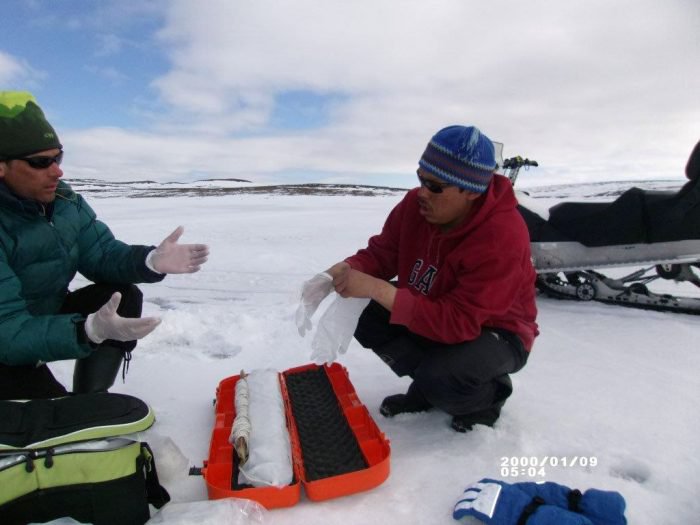
Joeffrey Okalik and Murray Richardson deploy temperatures sensors to thermal stratification in an Iqaluit area lake (Iqaluit, 2014). Photo Credit: Jamal Shirley
Cleaning up a dirty word: What’s the use of research?
As an Inuk scholar who wants to do research for the well-being of my community, I am conflicted on three levels: 1) that enough research related to Inuit is out there; 2) that research is a “dirty” word among Inuit; and 3) that action to solve our problems is more important than research. Perhaps the idea I have struggled with the most is that research is irrelevant to my people. The “deep suspicions about the relevance of science” and doubt about its “ability to work in the interest of anybody other than scientists and southern institutions” were articulated in the literature starting in the 1980s (Kemp & Brooke, 1983: 1). This view among Inuit is rooted in old colonial practices when Inuit and other Indigenous Peoples were used for “advancing science” (e.g., nutrition experiments in residential schools). It is also reinforced by ongoing knowledge extraction practices, when formally-trained researchers and southern institutions benefit from advancing knowledge related to Inuit on a long-term basis (e.g., career-building, attracting funding and students, publishing, etc.), while Inuit communities may only see short-term benefits (e.g., income from hiring local research collaborators and participants, creation of a database, etc.).
Rethinking Arctic research can change the state of affairs mentioned above. If research is how responsible policy is arguably made, and the way through which southern institutions can be challenged for their role in maintaining the power status quo, then Inuit need research and meaningful collaboration. Altering methods to create space for Inuit voices and knowledge to be heard and documented in the research process (i.e. what needs to be researched, how to conduct the research, how to disseminate results) is a necessary step. Better yet, Inuit can do our own research to benefit our communities.
Notwithstanding the challenges that I have expanded on so far, research is becoming more inclusive of Inuit voices through progressive methods such as community-based participatory research. However, change cannot happen when the insights resulting from bridging Western knowledge and Inuit knowledge largely remain the exclusive domain of southern institutions. Writing about research findings in inaccessible ways to Inuit communities (e.g., academic jargon), disseminating the new knowledge in specialized journals and in academic institutions where Inuit are a rare sight, or taking ownership of knowledge gained through collaborative research in authored pieces published in such exclusive media, perpetrates the intellectual capital of formally trained researchers and its edge over Inuit collective wisdom. It betrays the credibility gap inherent in current Arctic research governance.
Conclusions: Towards researchers as better Northerners
During my post-secondary studies, I have often thought: Why do my arguments as an Inuk only become legitimate if related to scholarly sources or argued within a Western logic framework? I soon realized that my knowledge as a community member needs the credibility of Western research. Or, historically, research is a privilege that Inuit have not been afforded: the privilege to not be concerned with daily basic needs and dedicate time to thinking about their world in a detached way. Research has been the domain of academia, which continues to make it inaccessible to Inuit, even as it concerns our future in our homelands.
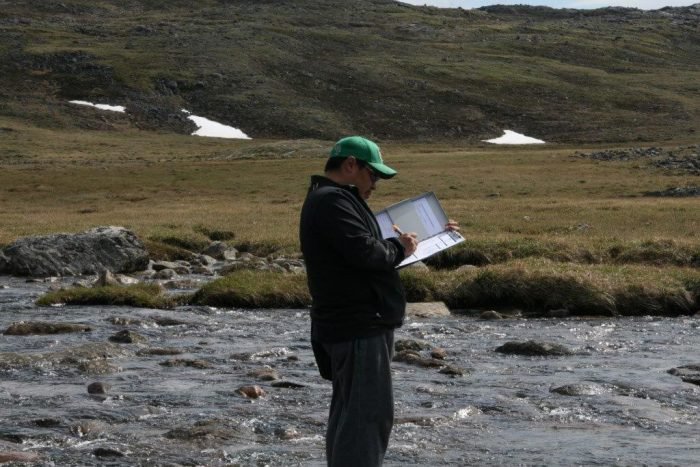
David Nakashuk records field observations for a watershed hydrology study (Iqaluit, 2011). Photo Credit: Jamal Shirley
So, what does this mean for the future of Arctic research governance? I turn to the idea that there is a lack of research and governance capacity by Inuit, and I relate it to Inuit self-determination. We often hear about lack of capacity in the North, whether in research circles, or in policy-making. Such a notion legitimates the federal-territorial relations of dependency and the way Inuit knowledge counts in the research process. I say that there is a lack of Inuit-specific capacity in the southern research and policy community. It is a situation that strengthens the barriers to self-determination that my people experience. We need a new way of governing Arctic research and a new way of making Arctic policy. We need research and policy partnerships that respect our right to self-determination. The credibility gap is maintained as long as capacity building is a one-way street.
I argue for the need to have a shift in Arctic research governance away from ways of thinking and doing that reinforce colonial frameworks of producing knowledge and making policy, and towards research and policy accountability to Inuit communities. Recognition of specific in-situ Northern capacity, rejection of knowledge hierarchies, practices of action research, reciprocity, transparency, and research mobilization are central principles to how I see Arctic research governed towards this goal. We don’t need Northerners to become better researchers, we need researchers to become better Northerners.
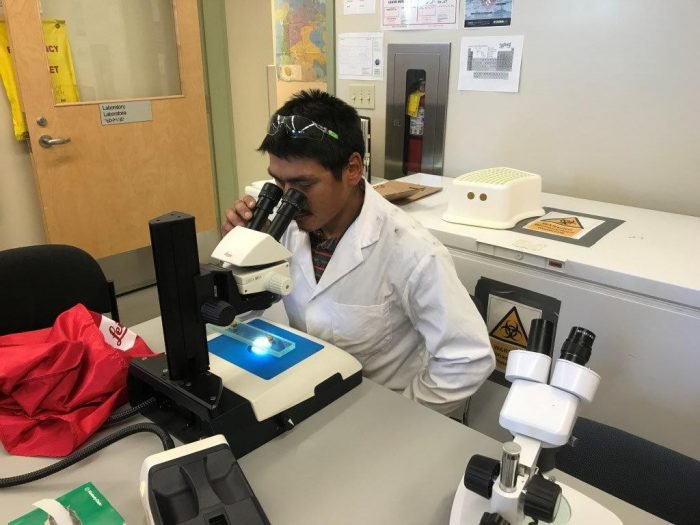
Daniel Taukie (Nunavut Tunngavik Incorporated) examines a meat sample to detect the microscopic Trichinella parasite (Iqaluit, 2017). Photo Credit: Jamal Shirley
Born and raised in Iqaluit, Pitseolak is currently building on over 25 years of Inuit advocacy in his M.A. in Northern Studies at Carleton University. His professional interests lie at the intersections of sustainable Northern community development, Inuit values and self-determination. Often a guest lecturer on Arctic matters; he also remains an active member of the Inuit community offering his skills and experience to help address community needs.
References
Awa, S., Tapardjuk, L. (2002). The first annual report of the Inuit Qaujimajatuqanginnut (IQ) Task Force. Iqaluit: Government of Nunavut.
Bravo, M. (2010). Epilogue: The humanism of sea ice. In Krupnik et al. (eds.), SIKU: Knowing our ice: Documenting Inuit sea ice knowledge and use. London: Springer.
Gearheard, S. et al. (eds.). (2017). Sivuninga Sikum (The meaning of ice). People and sea ice in three Arctic communities. International Polar Institute.
Hunn, E. (1988). What is traditional ecological knowledge? In Williams, N., and Baines, G., (eds.), Traditional ecological knowledge: Wisdom for sustainable development. Canberra: Australian National University, 13–15.
Kemp, W., & Brooke, L. (1983). A new approach to Northern science. The Northern Raven (NS), 2(4).
Krupnik, I., Aporta, C., Gearheard, S., Laidler, G., & Kielsen Holm, L. (2010). SIKU: Knowing our ice: Documenting Inuit sea ice knowledge and use. London: Springer.
Wenzel, G. (1999). Traditional ecological knowledge and Inuit: Reflections on TEK research and ethics. Arctic, 52(2), 113-124. doi:http://dx.doi.org/10.14430/arctic916
Wenzel, G. W. (2004). From TEK to IQ: Inuit Qaujimajatuqangit and Inuit cultural ecology. Arctic Anthropology, 41(2), 238-250.
Notes
1. Throughout this paper, “Western” and “southern” are used to position Inuit (i.e. “North/-ern”) in distinction to the non-Inuit worldviews. While “Western” is used here to replace the more established concept of “Global North,” “southern” denotes the national scale.
2. Although the Western academic knowledge system includes schools of thought that critique the colonial status quo, the way research is generally conducted and delivered does little, if anything, to challenge the status quo on the ground; the critique itself remains in the privileged academic sphere.
3. Inuit-related research allocations in Budget 2018 and the National Inuit Strategy on Research by the Inuit Tapiriit Kanatami (ITK) are good signs of research as a tool for self-determination.
